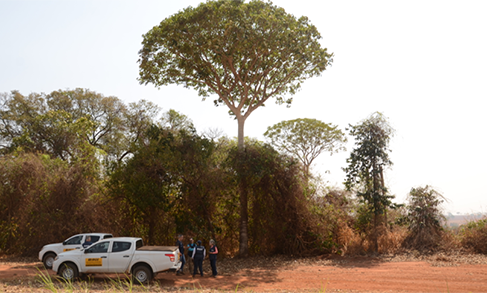Continuous PNAD
Unemployment remains stable in 21 Federation Units in the third quarter
November 17, 2022 09h00 AM | Last Updated: November 17, 2022 03h10 PM

Only six Federation Units followed the reduction registered in the unemployment rate in Brazil in the third quarter over the three previous months. While the national index reduced from 9.3% to 8.7% in the period, 21 FUs remained stable. In the inter-annual comparison with the same quarter a year ago, the unemployment rate significantly dropped in every Federation Unit. These data are from the Quarterly Continuous National Household Sample Survey (PNAD), released today (17) by the IBGE.
“In the second quarter, the unemployment rate had fallen 1.8 percentage points, a drop spread along 22 Federation Units. The drop was less intense in the third quarter (0.6 p.p.) and it affected the state figures,” explains Adriana Beringuy, the IBGE Coordinator of Labor and Income.
The reductions in the rate compared with the previous quarter were registered in Paraná (-0.8 percentage points), Minas Gerais (-0.9 p.p.), Maranhão (-1.1 p.p.), Acre (-1.8 p.p.), Ceará (-1.8 p.p.) and Rondônia (-1.9 p.p.). This indicator dropped in every Major Region in this same comparison and the Northeast remained with the highest rate (12.0%). Among ten states with the highest unemployment rate, six are from that region.
The lowest unemployment rates in the third quarter were in Rondônia (3.9%), Mato Grosso (3.8%) and Santa Catarina (3.8%). The South was the region with the lowest rate (5.2%) and its three states recorded percentages below the national average.
The informality rate registered in Brazil was 39.4% in the third quarter. The highest percentages were in Pará (60.5%), Maranhão (59.1%) and Amazonas (57.1%), states in which most of the employed persons were in informal jobs. On the other hand, Santa Catarina (25.9%), Federal District (29.8%) and São Paulo (30.6%) reported the lowest proportions.
“The informality rate dropped in national terms, though Santa Catarina, Rio Grande do Sul, Espírito Santo, Pernambuco and Rio Grande do Norte stand out among the biggest reductions in this indicator”, states Beringuy. Domestic and private sector workers without a formal contract, employers and self-employed workers without CNPJ, and assisting family workers are among the informal population.
In the third quarter, only 25.3% of the domestic workers in Brazil had a formal contract. Among those employed in the private sector, that proportion was 73.3%, with lower percentages in the North (57.7%) and Northeast (57.3%). Santa Catarina (88.4%), Rio Grande do Sul (81.3%) and São Paulo (81.2%) were the states with the highest proportions. The lowest ones were in Maranhão (47.0%), Piauí (48.5%) and Pará (50.3%).
“In the North and Northeast, high informality rates are associated with a low coverage of formal contracts in both regions,” says the researcher.
Nearly 2.6 million look for a job for two years or more in Brazil
In the entire country, 44.5% of those unemployed were looking for a job between one month and less than a year. For 11.7%, the search was lasting from a year to less than two years and, for 27.2%, or 2.6 million unemployed persons, two years or more. Nearly 16.6% of them were looking for a job for less than a month.
Women, black and brown persons remain unemployed above the national average
Another view of the survey shows that the unemployment rate of men (6.9%) remains below the national index (8.7%), whereas that of women remains quite above (11.0%) in the third quarter. “The unemployment rate dropped both among men and women, though the distance between them has been increasing, with women registering a percentage quite above that of men,” highlights Beringuy.
The unemployment rates of black (11.1%) and brown (10.0%) persons remained above the national average as well That of white persons remains below it: 6.8%.
Concerning the employment-population ratio - percentage of persons at working age who are effectively employed -, the proportion of men was 67.6%, whereas that of women was 47.5%. The biggest difference was in the North (24.7 p.p.).
Earnings grow in every region against the previous quarter
The monthly average earnings received by workers was estimated at R$2,737 in the third quarter, growing both in relation to the three previous months (R$2,640) and to the same period last year (R$2,670). They increased in every region compared with the previous quarter. In relation to the third quarter of 2021, only the South and Central-West rose and the other regions remained stable.
“The average earnings grew 3.7% this quarter over the previous one. Earnings tended to expand in most Federation Units, though only eight of them recorded a statistically-significant growth,” says the coordinator.
The wage bill from all jobs was R$266.7 billion, a growth over the previous quarter (R$254.5 billion) and over the same period last year (R$242.7 billion).
More about the survey
The Continuous PNAD is the main instrument to monitor workforce in Brazil. The survey sample per quarter corresponds to 211 thousand households surveyed in Brazil. Nearly two thousand interviewers work in the survey in 26 states and in the Federal District, integrated to the data collection network of more than 500 IBGE branches.
Due to the Covid-19 pandemic, the IBGE implemented data collection by telephone on March 17, 2020. In July 2021, face-to-face data collection was resumed. The id of the interviewers can be confirmed at the Answering the IBGE website or through the Call Center (0800 7218181) by checking their ID numbers, which can be requested by the informants. See PNAD data at Sidra.




















